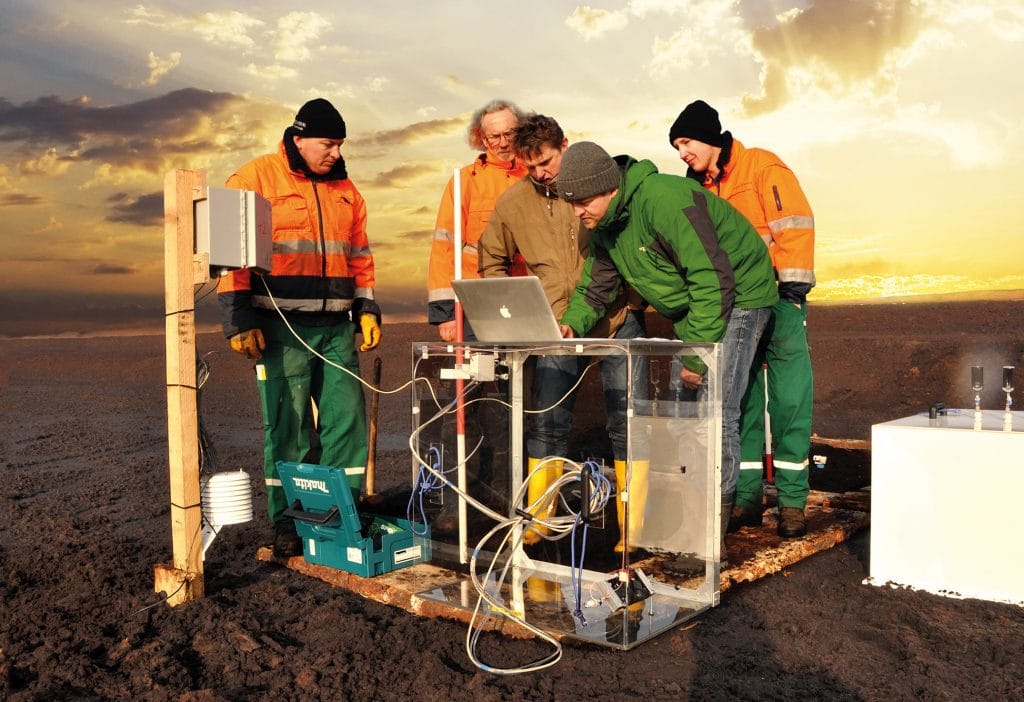Scientific study: Peat extraction causes lower emissions than expected
Klasmann-Deilmann commissioned and conducted a study that involved monitoring of emissions from peatland over a two-year period in accordance with scientific criteria. It emerged that raw-materials extraction results in a considerably smaller quantity of greenhouse gas emissions per annum than assumed so far. The figure for average emissions that the company had previously used, based on data from the literature, was 10.73 t CO2e per hectare, per annum. In actual fact, however, the mean annual emissions associated with black peat are 3.13 t CO2e per hectare; those associated with white peat are 8.05 t CO2e ha-1 a-1.

Against this background, the company initiated a study on emissions derived from peat extraction and, between February 2015 and February 2017, conducted greenhouse gas measurements on our white-peat and black-peat extraction areas. The aim was to close the existing gap in the scientific data and to provide reliable information about emissions from the extraction and use of peat. Klasmann-Deilmann was assisted, in both the monitoring campaigns and in drawing up the footprint, by the Cologne-based Meo Carbon Solutions GmbH. Experts from Meo, the Müncheberg-based Leibniz Centre for Agricultural Landscape Research (ZALF), the regional State Agency for Mining, Energy and Geology (LBEG) in Hanover, the German Research Centre for Geosciences (GFZ) in Potsdam, and the Kiel Institute for the World Economy (IFW) confirmed that measurements and footprinting activities under this project yield valid outcomes and meet scientific criteria.
Based on the results of these emissions measurements, average emissions per hectare, per annum (i.e. CO2e ha-1 a-1) are considerably lower than was previously assumed. The mean emission levels determined for the black-peat extraction area used for monitoring in Germany were 3.13 t CO2e ha-1 a-1. On the white-peat extraction site in Lithuania, monitoring revealed average emissions of 8.05 t CO2e ha-1a-1. Thus, mineralisation of both black and white peat, and associated emissions, occurred to a lesser extent than previously estimated.
